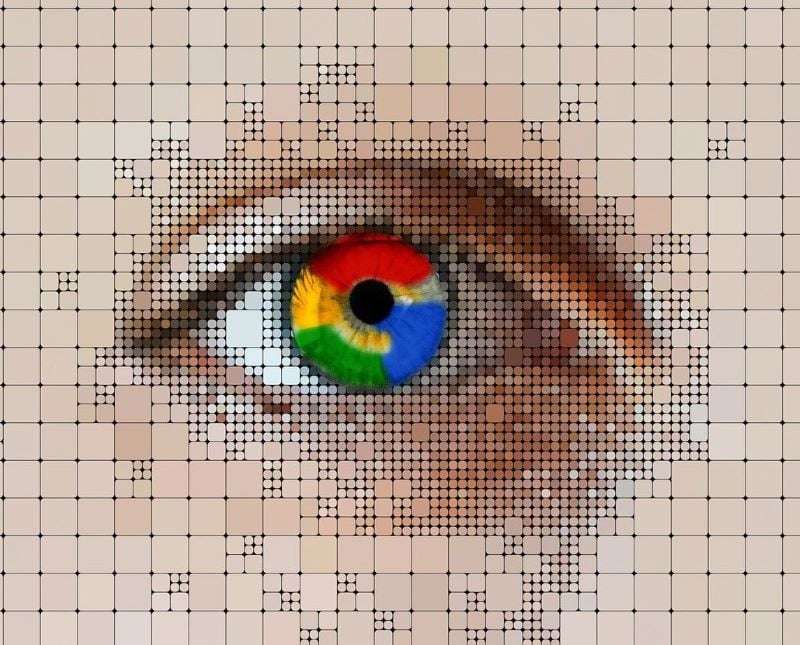Google has decided to reintroduce digital fingerprinting as part of its advertising strategy, a move that is causing significant controversy and concern, especially with regard to user privacy. The decision marks a sharp contrast to the company’s previous privacy stance, and it has raised a number of questions about how advertisers will track users in the future. This article explores the implications of this shift, delves into the details of digital fingerprinting, and discusses the potential impact on user privacy, regulatory oversight, and Google’s evolving advertising strategy.
What Is Digital Fingerprinting and How Does It Work?
Digital fingerprinting is a method of tracking users online that involves collecting unique data points from a user’s device. Unlike cookies, which rely on files stored in the browser, digital fingerprinting collects detailed information from the device itself, including its software, hardware, IP address, and browsing activity. These data points combine to create a “fingerprint” that can uniquely identify a user across multiple websites, apps, and devices. This method can track users even if they clear their browsing history or delete cookies, making it more difficult for users to maintain control over their data.
The Role of Digital Fingerprinting in Google’s Advertising Strategy
Google’s decision to reintroduce digital fingerprinting in its advertising system comes as part of the company’s broader strategy to reach users across a variety of devices, including smart TVs, gaming consoles, and mobile platforms. The shift to connected devices and streaming services has led to the necessity of tracking users across a fragmented ecosystem of online platforms. Digital fingerprinting allows advertisers to track individuals across different devices by collecting data points that are not easily wiped or blocked.
The company justifies this decision by arguing that digital fingerprinting provides a more secure and efficient way for businesses to target ads without compromising user privacy. Google claims that advancements in privacy-enhancing technologies (PETs) will help safeguard users’ privacy while allowing advertisers to measure and target their ads more effectively.
Implications for User Privacy
Digital fingerprinting poses several privacy challenges, particularly when compared to traditional methods like cookies. Cookies can be deleted by users through their browser settings, but fingerprinting works by collecting persistent data from a device that cannot be easily cleared. As a result, users may be unknowingly tracked and identified across various websites and apps, making it harder to protect their personal data.
The Information Commissioner’s Office (ICO) in the UK has raised concerns about the implications of this tracking method. The ICO has argued that digital fingerprinting could undermine the ability of users to control their privacy and could lead to greater surveillance of online activity. The data collected through fingerprinting is persistent and difficult to erase, meaning users may have less control over how their information is used.
Google’s New Approach to Ad Targeting
As of February 16, 2025, Google will lift restrictions on ad targeting across a broader range of devices, including smart TVs and gaming consoles, by allowing advertisers to use digital fingerprinting techniques. This change is designed to help businesses target users more efficiently across multiple platforms, reflecting the changing nature of the internet where users interact with content on a variety of connected devices.
Google contends that digital fingerprinting, when used with the right privacy safeguards, can enhance the advertising experience for both users and businesses. The company maintains that it will be transparent about how fingerprinting is used and will continue to prioritize privacy by offering users control over their data.
However, this move has drawn strong criticism from privacy advocates, who argue that fingerprinting presents a serious privacy risk. Privacy-conscious users are particularly concerned that they will have less ability to block or clear the data being collected, making it more difficult to maintain anonymity online.
Regulatory Response and Industry Concerns
The reintroduction of digital fingerprinting has drawn the attention of regulators and privacy advocates worldwide. The ICO has issued a statement expressing concern that fingerprinting may infringe upon user privacy by making it more difficult for individuals to block or control the tracking of their data. In response, the ICO has emphasized that businesses must ensure that digital fingerprinting is implemented transparently and in accordance with privacy laws.
Stephen Almond, a representative from the ICO, explained that the unique data points collected via fingerprinting, such as device IDs and IP addresses, cannot be easily removed by users, which means they could be tracked across different platforms without their knowledge. The ICO has urged businesses to be transparent about their use of fingerprinting and to ensure compliance with data protection regulations.
The reintroduction of digital fingerprinting is also raising concerns among other privacy regulators around the world, including the U.S. Department of Justice (DOJ), which has been closely monitoring Google’s advertising practices. In addition to potential regulatory scrutiny, the DOJ may also require Google to make changes to its advertising operations, including possibly divesting its Chrome browser, further complicating the company’s ability to control its vast advertising network.
The Future of Digital Advertising and User Privacy
The return of digital fingerprinting marks a turning point in the ongoing debate over user privacy in the digital advertising landscape. As advertisers continue to seek more effective ways of tracking users across a fragmented internet ecosystem, digital fingerprinting is likely to play an increasingly significant role. However, this new approach to ad targeting raises important questions about how privacy will be maintained in the future.
While Google has made efforts to reassure users that its fingerprinting approach will respect privacy, privacy advocates remain concerned that this shift could lead to further erosion of user autonomy and control over personal data. In the coming months, businesses and regulators will need to carefully monitor the use of fingerprinting technology to ensure that it is used responsibly and transparently.
What Does This Mean for Users?
For users, the reintroduction of digital fingerprinting raises significant concerns about how their data is being tracked and used for advertising purposes. Privacy-conscious individuals may struggle to protect their information in an environment where tracking is more pervasive and harder to avoid. As Google and other companies move toward using fingerprinting as a standard method of ad targeting, it is important for users to stay informed about how their data is being used and take steps to protect their privacy.
Frequently Asked Questions (FAQs)
- What is digital fingerprinting? Digital fingerprinting is a method of tracking users by collecting unique data points from their device, such as hardware information, IP addresses, and browsing activity. These data points are used to create a unique identifier for the user.
- Why is Google reintroducing digital fingerprinting? Google is reintroducing digital fingerprinting to help advertisers target users more effectively across a wider range of devices, such as smart TVs and gaming consoles, as part of the changing digital advertising landscape.
- How does digital fingerprinting differ from cookies? Unlike cookies, which can be deleted or blocked by users, digital fingerprinting collects data that cannot be easily erased, making it harder for users to control their online tracking.
- What are the privacy concerns associated with digital fingerprinting? The primary concern is that users may be unknowingly tracked across different platforms without their consent, and that fingerprinting could undermine privacy by making it more difficult for individuals to protect their data.
- What is the role of regulators in the digital fingerprinting debate? Regulators, including the UK’s ICO, are scrutinizing the use of digital fingerprinting and have warned that businesses must use it responsibly and in compliance with privacy laws. Failure to do so could result in regulatory actions.
Conclusion: A New Era of Tracking and Privacy
The reintroduction of digital fingerprinting marks a significant shift in the digital advertising industry. While it offers new opportunities for businesses to reach users across multiple devices, it also raises serious privacy concerns that need to be addressed. As the digital landscape evolves, both users and regulators will need to stay vigilant to ensure that privacy protections are not compromised in the pursuit of more effective ad targeting.
ALSO READ
https://flarenews.pk/2024/12/20/gwadar-to-host-hbl-psl-10-player-draft-in-2025/



